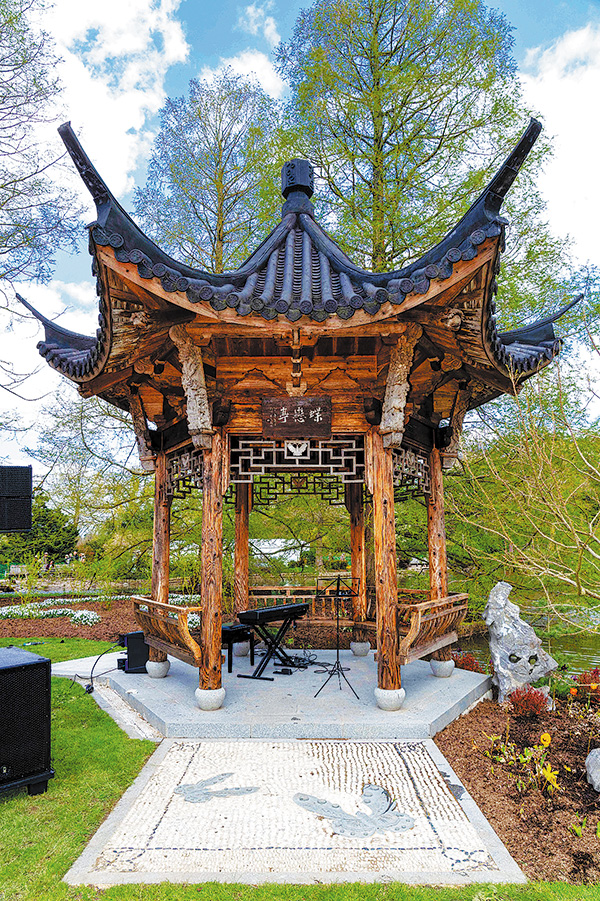

Some 40 kilometers southwest of central London lies a garden. About five minutes' walk inside that garden — the Royal Horticultural Society's Garden Wisley, in Surrey — is a small lake. And, on the bank of that lake stands a Chinese-style building called Butterfly Lovers Pavilion.
The wooden hexagonal pavilion has attracted hundreds of thousands of visitors each year since it was built in 2005.
Recently, a restoration project has ensured the beloved pavilion can continue to be a symbol of cultural exchanges between China and the United Kingdom.
The traditional structure was originally featured in a Chinese show-garden at the Hampton Court Palace Flower Show, one of the world's biggest gardening contests and festivals, in 2005.
The pavilion's designer, Liu Tingfeng, a professor of landscape and garden design at Tianjin University, still vividly recalls the day the show-garden was unveiled.
"The British visitors were amazed by the pavilion and Chinese garden, because our philosophies in terms of making a garden are different — we had very few flowers, but visitors could find various views and different mini-landscapes as they stepped inside and looked from different angles," Liu says, adding that there was a lot of enthusiasm and media coverage at the time.
With a height of 6 meters and a base width of 5 meters, the six sides of the pavilion are decorated with butterfly patterns, in homage to the Chinese legend of Liang Shanbo and Zhu Yingtai, or the Butterfly Lovers.
Their story is set during the Eastern Jin Dynasty (317-420), with Zhu, a daughter in a wealthy family, entering an all-male academy disguised as a man, where she falls in love with her classmate, Liang. The lovers are unable to marry because of objections from Zhu's family, and both die prematurely, turning as they do into beautiful butterflies that fly off together into an eternal paradise.